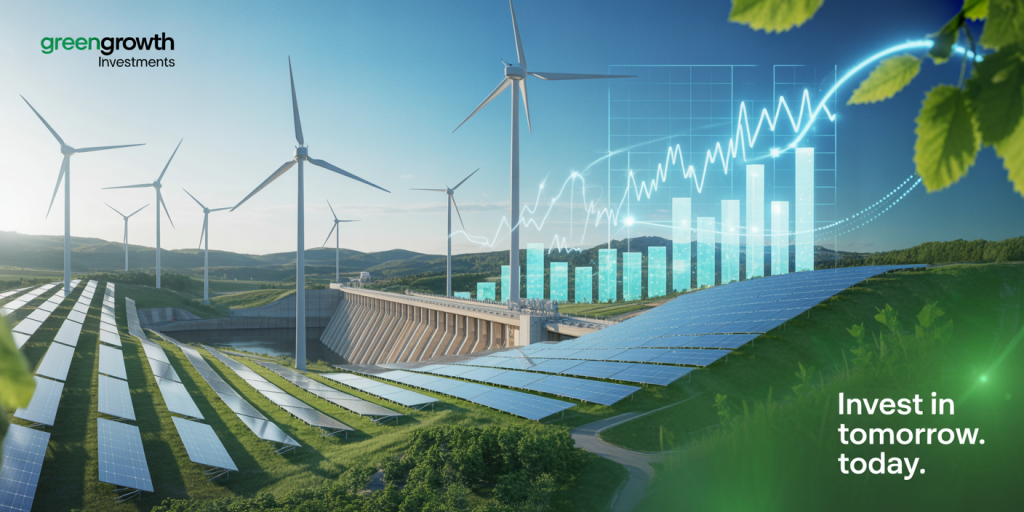Climate change is no longer solely an environmental concern; it poses significant economic risks and opportunities as well. The intersection between finance and climate is becoming increasingly pronounced as governments, businesses, and investors recognize that addressing global warming is essential not just for sustainability but for economic survival and growth. This article explores the financial rationale for climate action, examining the costs of inaction and the benefits of proactive measures to mitigate climate risks.
The Economic Consequences of Climate Inaction
The economic fallout from climate change is already visible, with natural disasters causing billions of dollars in damages worldwide. According to the National Oceanic and Atmospheric Administration (NOAA), in 2023 alone, the United States experienced 22 separate weather and climate disasters each costing over $1 billion, cumulatively surpassing $150 billion in losses [NOAA, 2024]. Globally, the World Bank estimates that climate-induced damage could push over 100 million people into extreme poverty by 2030, further straining social and economic systems.

Beyond direct damage to infrastructure and livelihoods, climate change also disrupts supply chains, reduces agricultural yield, and amplifies health risks, increasing public expenditure. For example, reduced crop productivity due to drought and flooding in Sub-Saharan Africa threatens food security and economic stability. The International Food Policy Research Institute reports that without adaptive measures, climate change may reduce global agricultural output by as much as 15% by 2050 [IFPRI, 2022].
The financial risks of climate change are multifaceted, including physical risks (damage from extreme weather) and transition risks (costs associated with shifting to a low-carbon economy). The Bank of England, in its 2021 climate stress test, highlighted that failure to transition could result in a 20% loss in the value of UK financial assets over 30 years. Hence, ignoring climate change exposes economies and investors to significant volatility and loss.
Investment in Renewable Energy: A Lucrative Opportunity
Shifting investment towards renewable energy is one of the most compelling financial arguments for climate action. Solar, wind, and hydroelectric power have witnessed dramatic cost reductions over the past decade. The International Renewable Energy Agency (IRENA) highlights that the average cost of solar photovoltaic (PV) electricity has fallen by approximately 85% since 2010, making it one of the cheapest energy sources in many regions [IRENA, 2023].

Companies and governments harnessing renewable resources not only reduce carbon footprints but also lock in long-term savings on energy costs. For example, the Danish energy company Ørsted transitioned from fossil fuels to renewables and saw its share price increase by over 100% between 2017 and 2023, while significantly reducing its carbon emissions. Similarly, the solar panel manufacturer First Solar reported a 30% revenue increase in the last quarter of 2023 as global demand for photovoltaics soared.
A comparative table below illustrates renewable versus fossil fuel costs and risks, demonstrating the growing financial attractiveness of renewables:
| Aspect | Fossil Fuels | Renewables |
|---|---|---|
| Capital Costs | High upfront and volatile | High upfront but steadily declining |
| Operational Costs | High (fuel + maintenance) | Low (mainly maintenance) |
| Price Volatility | High fluctuating prices | Stable and predictable |
| Carbon Pricing Impact | High risk of increased costs | Advantageous, potential credits |
| Regulatory Risk | Elevated due to climate policies | Lower, aligned with regulations |
| Market Growth (%) | Declining or stagnant | Approximately 8-10% annual growth |
These figures underscore that investing in renewable energy is both economically prudent and necessary to reduce climate-related risks.
Corporate Leadership in Climate Action and Financial Returns
Businesses that lead in sustainability and climate action often enjoy superior financial performance and investor confidence. Analysis by Morgan Stanley shows that companies scoring highly on Environmental, Social, and Governance (ESG) criteria typically outperform their peers by 5-10% annually on stock returns [Morgan Stanley, 2023]. These companies benefit from enhanced brand reputation, consumer loyalty, and cost savings from efficiency improvements.
An illustrative case is Unilever, a global consumer goods giant that committed to achieving net zero emissions by 2039. Through energy efficiency projects, waste reduction, and sustainable sourcing, Unilever saved approximately €700 million between 2018 and 2022. The firm’s stock performance also outpaced the broader market, with a 15% increase in share value over the same period.
Moreover, climate-conscious companies attract capital more easily. BlackRock, the world’s largest asset manager, has increasingly steered investments toward firms with robust climate strategies, controlling $9 trillion in assets [BlackRock, 2024]. This shift pressures companies to adopt sustainable practices or risk losing access to critical funding.

Public Policy and Economic Incentives Encouraging Climate Investments
Governments worldwide are implementing policies that create financial incentives for climate action and penalize carbon-intensive activities. Carbon pricing mechanisms such as taxes and cap-and-trade systems are becoming pervasive. The European Union’s Emissions Trading Scheme (EU ETS), for example, saw carbon prices escalate from under €10 per metric ton in 2017 to over €80 in 2023, directly impacting companies’ cost structures and motivating investment in cleaner alternatives [European Commission, 2024].
Subsidies and grants for clean energy projects and electric vehicles (EVs) also enhance the investment case. In the United States, the Inflation Reduction Act of 2022 allocated over $400 billion toward climate and energy initiatives through tax credits, rebates, and funding. This has accelerated the adoption of EVs, battery technologies, and renewable deployments, making green investments more profitable.
The table below summarizes key public policy tools and their economic impact:
| Policy Tool | Description | Financial Impact |
|---|---|---|
| Carbon Tax | Charges per ton of CO₂ emitted | Increases fossil fuel costs; incentivizes efficiency |
| Cap-and-Trade | Emissions allowances traded among companies | Creates market-driven cost control |
| Subsidies | Direct financial support for green technologies | Reduces project costs, boosts adoption |
| Regulatory Standards | Mandated emission limits or efficiency targets | Forces innovation, penalizes non-compliance |
| Green Bonds | Debt instruments for climate projects | Provides low-cost capital for sustainable investments |
These approaches collectively tilt the economic landscape in favor of sustainable and climate-resilient investments, reinforcing the financial case for climate action.
Mitigating Climate Risk in Financial Portfolios
Climate-related risks have moved to the forefront of financial portfolio management. Investors increasingly recognize that integrating climate risk analysis is essential for protecting returns and avoiding stranded assets—investments that lose value due to carbon transition or physical damage.
Recent research by the Task Force on Climate-related Financial Disclosures (TCFD) indicates that over 1,500 major companies worldwide have begun reporting on climate risks, promoting transparency and better risk assessment. For example, asset managers employing climate scenario analysis have identified that $1 trillion in global fossil fuel reserves could become stranded by 2030 under aggressive climate policies.
The Prudential Financial company incorporated climate risk in its investment decision-making, reducing exposure to coal and oil sands projects, and reallocating capital to renewable infrastructure and sustainable real estate. This approach not only reduced portfolio volatility but also improved returns by 3-4% annually.
Climate risk mitigation is becoming a fiduciary duty, as regulators globally tighten disclosure requirements. Institutional investors that adapt early stand to capitalize on emerging opportunities while reducing exposure to financially devastating climate impacts.
Anticipating the Economic Dynamics of the Next Decade
Looking forward, the financial landscape associated with climate action is set to evolve rapidly, presenting both challenges and opportunities. The International Monetary Fund (IMF) estimates that green investments will require approximately $4 trillion annually over the next decade to meet global climate goals [IMF, 2023]. This level of investment is expected to create millions of new jobs, stimulate innovation, and drive sustainable economic growth.
Automation and digital technologies will further enable efficient energy management, reducing costs and enhancing returns on clean energy projects. Meanwhile, expanding markets for carbon offsets and nature-based solutions can provide additional revenue streams for businesses engaged in reforestation and ecosystem restoration.
However, climate inaction could exacerbate inequalities and economic instability. Regions most vulnerable to climate impacts will face heightened financial stress, fueling migration and social unrest. Proactive policies and investments are crucial to ensuring an equitable transition.
In summary, the financial case for climate action is no longer hypothetical but empirically grounded in risk management, market trends, public policy, and innovation. Entities that recognize and act on these realities will not only contribute to global sustainability but will secure lasting economic resilience and growth.

Deixe um comentário